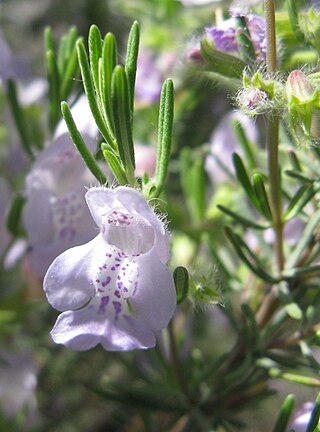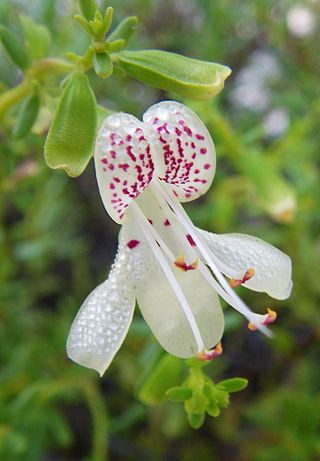
Titusville is a city in and the county seat of Brevard County, Florida, United States. As of the 2020 census, the population of the city was 48,789. Titusville is located along the Indian River, west of Merritt Island and the Kennedy Space Center, and south-southwest of the Canaveral National Seashore. It is a principal city of the Palm Bay–Melbourne–Titusville Metropolitan Statistical Area.

The piping plover is a small sand-colored, sparrow-sized shorebird that nests and feeds along coastal sand and gravel beaches in North America. The adult has yellow-orange-red legs, a black band across the forehead from eye to eye, and a black stripe running along the breast line. This chest band is usually thicker in males during the breeding season, and it is the only reliable way to tell the sexes apart. The bird is difficult to see when it is standing still, as it blends well with open, sandy beach habitats. It typically runs in short, quick spurts and then stops.

The gopher tortoise is a species of tortoise in the family Testudinidae. The species is native to the southeastern United States. The gopher tortoise is seen as a keystone species because it digs burrows that provide shelter for at least 360 other animal species. G. polyphemus is threatened by predation and habitat destruction. Habitat degradation is the primary reason that the gopher tortoise is listed as vulnerable on the IUCN Red List, but they are considered threatened in some states while they are endangered in others.

Florida scrub is a forest ecoregion found throughout Florida in the United States. It is found on coastal and inland sand ridges and is characterized by an evergreen xeromorphic plant community dominated by shrubs and dwarf oaks. Because the low-nutrient sandy soils do not retain moisture, the ecosystem is effectively an arid one. Wildfires infrequently occur in the Florida scrub. Most of the annual rainfall falls in summer.

The Archbold Biological Station (ABS) is a research institute with a surrounding 5,192.63-acre (21 km2) estate near Lake Placid, Florida, US. It is a venue for field research and education, as well as ranching.
Hartwrightia is a genus of North American flowering plants in the tribe Eupatorieae of the family Asteraceae. The genus contains a single species, Hartwrightia floridana, native to the US states of Georgia and Florida. The species is sometimes referred to by the common name Florida hartwrightia.

Conradina is a genus of flowering plants in the mint family, Lamiaceae. Its common name is false rosemary, or rarely, short leaf rosemary. There are 7 species of Conradina, all native to the southeastern United States. Conradina verticillata grows on the Cumberland Plateau in Kentucky and Tennessee. The other five grow mainly in Florida. All of the species are closely related and there is some doubt about whether they are all separate. Most species occupy xeric habitats with well-drained soils composed of white sand. The genus Conradina was established by Asa Gray in 1870. It was named for the American botanist Solomon White Conrad.

Warea carteri is a species of plant in the mustard family, Brassicaceae, known by the common names Carter's pinelandcress and Carter's mustard. It is an endangered, fire-dependent annual herb occurring in xeric, shrub-dominated habitats on the Lake Wales Ridge of central Florida in the United States.

Conradina etonia is a rare species of shrub in the mint family known by the common name Etonia rosemary. It is endemic to Putnam County, Florida, where it is known from about 8 populations on Etoniah Creek State Forest containing fewer than 1000 total individuals. It has a specific habitat requirement and the main threat it faces is destruction and degradation of its habitat. It is a federally listed endangered species of the United States.

Asimina rugelii is a rare species of flowering plant in the custard apple family known by the common names Rugel's pawpaw, Rugel's false pawpaw, and yellow squirrel banana. It is endemic to Volusia County, Florida, in the United States, where there are fewer than 5000 plants remaining in severely fragmented habitat. The main threat to this species is habitat destruction and degradation. It was federally listed as an endangered species in 1986.

Dicerandra christmanii is a rare species of flowering plant in the mint family known by the common names Garrett's mint, yellow scrub balm, and Lake Wales balm. It is endemic to Highlands County, Florida, in the United States, where it is known from only four sites on the Lake Wales Ridge. All are contained within a tract of land measuring 6 kilometers by 3 kilometers. The plant is steadily declining due to the destruction and degradation of its habitat, and only one of the four occurrences is on protected land. It is a federally listed endangered species.
Dicerandra cornutissima is a rare species of flowering plant in the mint family known by the common names longspurred mint, longspurred balm, and Robin's mint. It is endemic to Florida in the United States. It is found in Marion County, and possibly Sumter County, but it may have been totally extirpated from the latter. There are 12 known occurrences remaining as of 2017, down from 15 in 2000. The plant was federally listed as an endangered species in 1985.

Dicerandra frutescens is a rare species of flowering plant in the mint family known by the common names scrub mint and scrub balm. It is endemic to Highlands County, Florida, where it is known only from the Lake Wales Ridge. Its habitat is quickly being lost as it is converted to residential and agricultural use. It was federally listed as an endangered species of the United States in 1985.

Dicerandra immaculata is a rare species of flowering plant in the mint family known by the common names Lakela's mint, Olga's mint, and spotless balm. It is endemic to Florida in the United States, where it is known only from Indian River and St. Lucie counties. There are seven occurrences of the plant, two of which are scheduled for destruction as the land is cleared for development. The plant was federally listed as an endangered species in 1985.

Dicerandra is a genus of flowering plants in the mint family. Dicerandra comprises 11 species: six perennial and five annual species. The perennials have narrow ranges in Central Florida with small population sizes and only occur on ancient dune ridges along the Lake Wales Ridge or the Atlantic Coastal Ridge; the annual species occur more broadly on sandhill habitats to the north. The perennials’ habitat has been severely fragmented due to human development over the past century. As a result, all perennial species except one are listed as federally endangered. Annual species of the clade have large ranges when compared to perennial members, with distributions of annuals ranging for hundreds of miles from the Panhandle of Florida to southeastern Georgia, with the exception of Dicerandra radfordiana which is endemic to two sites along the Altamaha river. The genus is characterized by hornlike spurs on their anthers.

Harperocallis flava, known by the common name Harper's beauty, is a species endemic to parts of Florida in the United States, where it is known mainly from the Apalachicola National Forest in the Panhandle. It is seriously endangered and has been on the United States' endangered species list since 1979.

John Weaver Fitzpatrick is an American ornithologist primarily known for his research work on the South American avifauna and for the conservation of the Florida scrub jay. He is currently the Louis Agassiz Fuertes Director of the Cornell Lab of Ornithology in Ithaca, New York.
Dicerandra densiflora, the Florida balm, is a species of flowering plant in the mint family known by the common names scrub mint and scrub balm. It is native to North Central Florida, where it occurs along sand hill habitats. It is a member of the annual subclade of Dicerandra. D. densiflora grows up to 2 ft (61 cm) tall. Flower petals are lavender to purple in color with dark spots.
Dicerandra modesta is a species of Dicerandra endemic to the Lake Wales Ridge in Central Florida. It is commonly known as blushing scrub balm. It is a listed state and federal endangered species. It is known only from a few populations in Polk County, Florida. It grows in scrub and sand hills.

Dicerandra radfordiana, or Radford's balm, is an annual species of Dicerandra native to Eastern Georgia. It is found along the Altamaha River bluffs where deep, well drained sands are common. Only two populations are currently known, with one on public land and another, on private land, where it is protected by a conservation easement. The size of each population varies from year to year depending on the amount of rainfall.















